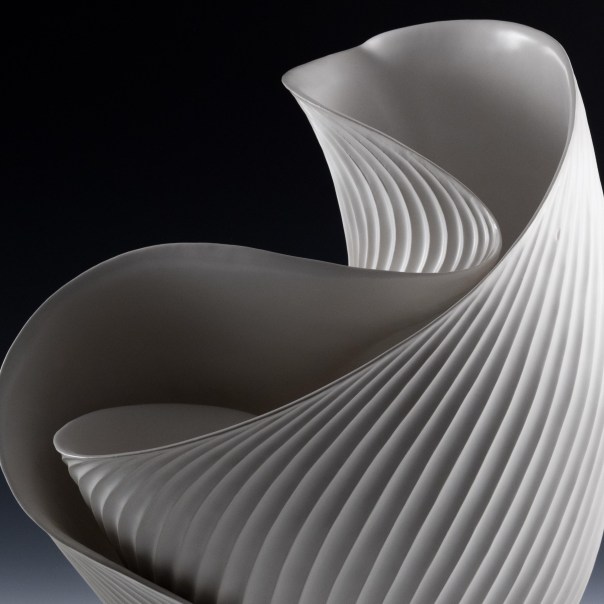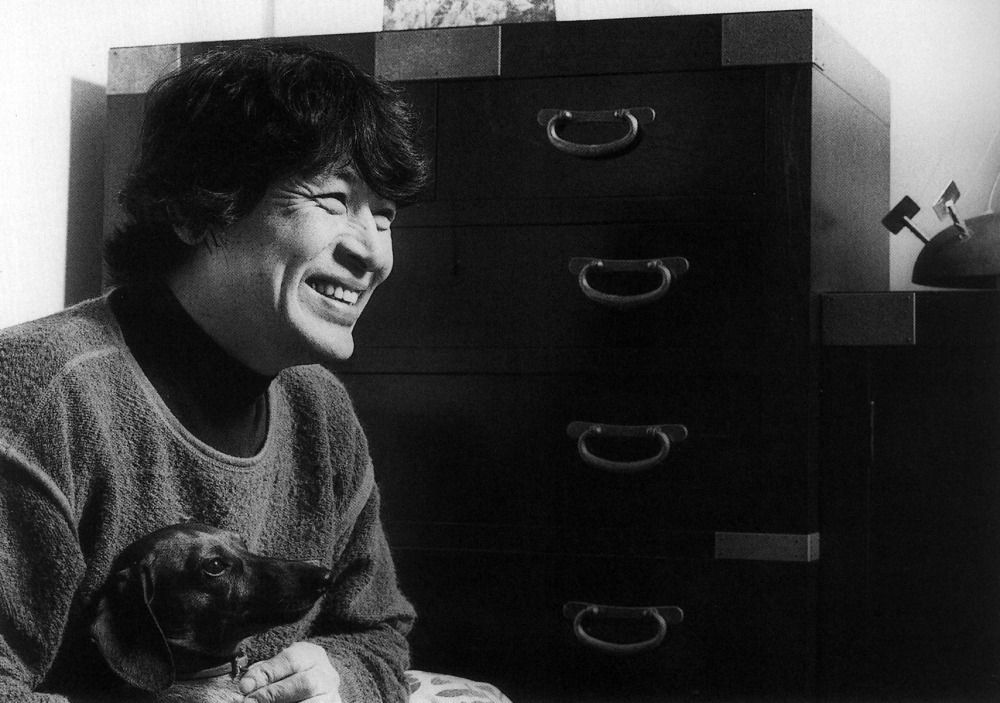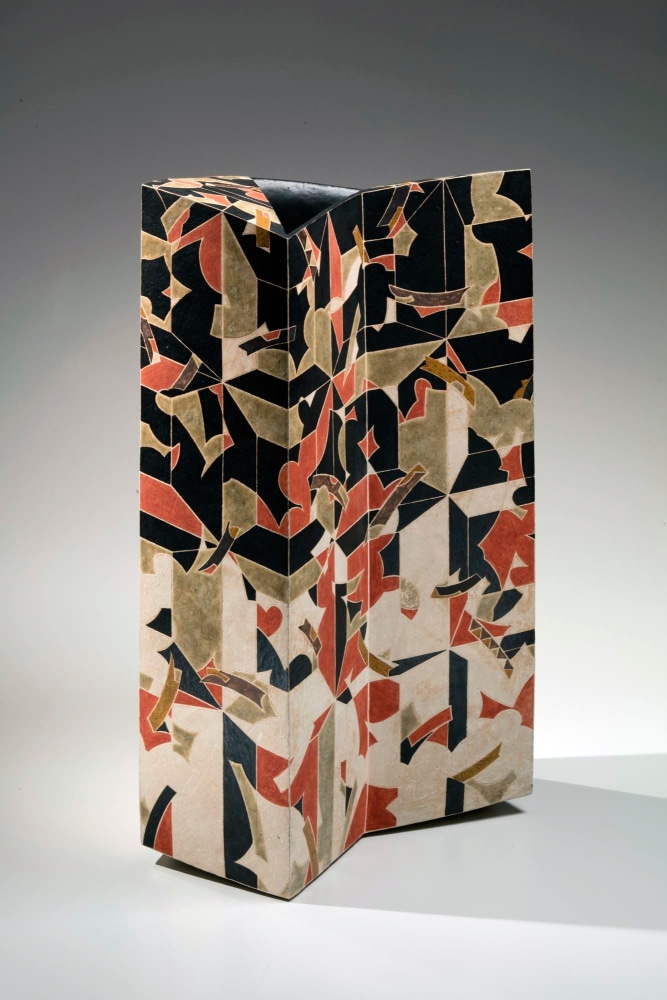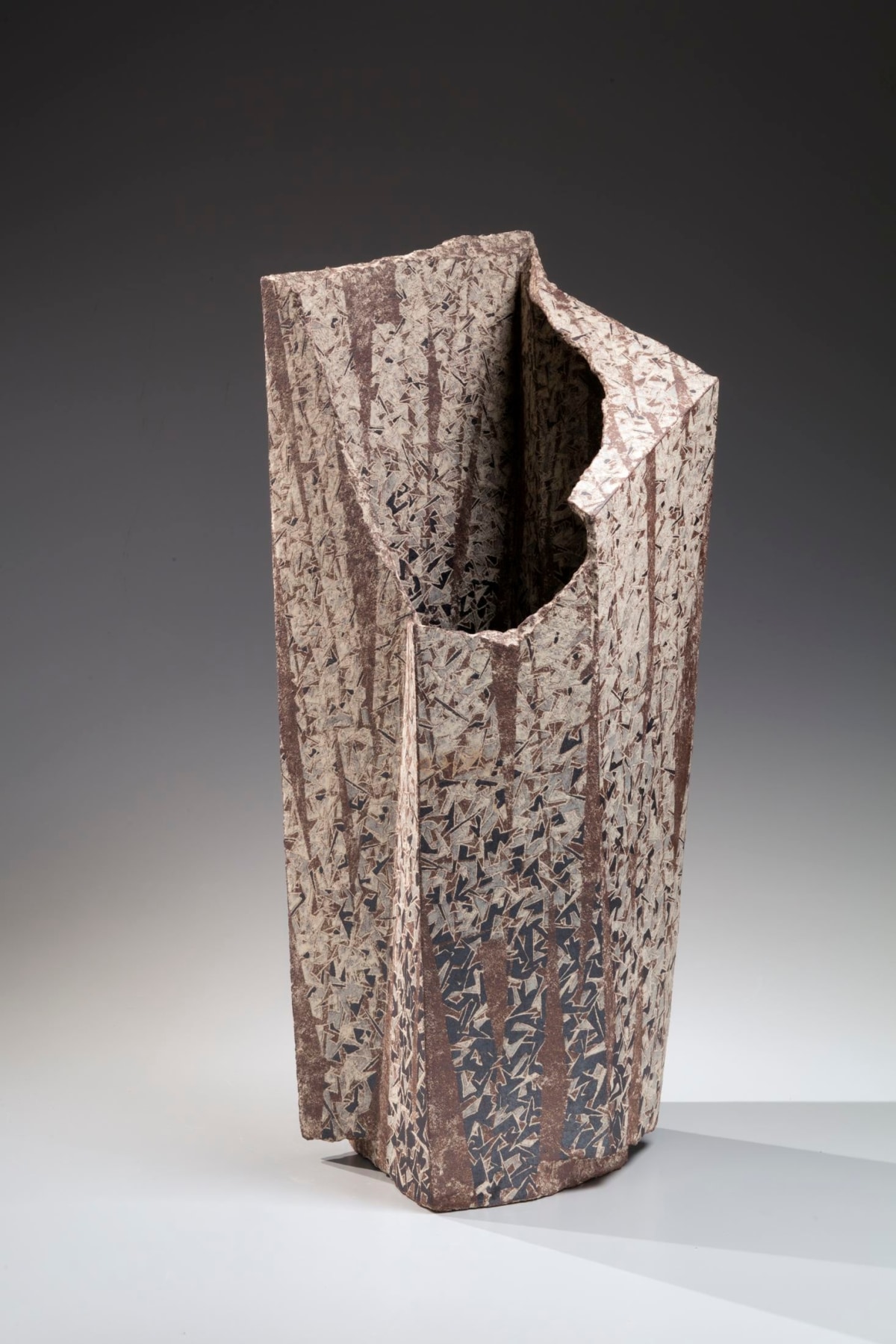

Photography by Shigyo Suenobu

(1944-2008)
One of the most popular clay artists of his generation, WADA MORIHIRO's large shows often sold-out within hours of opening. Wada employed a very broad range of surface patterning using a multiplicity of techniques, including slip decoration, inlay, wax-resist, carving, underglaze, blue-and–white (sometsuke), and blown-on glaze.
Moving from Kansai and Kyoto, where he was the student of Tomimoto Kenkichi (1886-1963) for several years, to Ibaraki Prefecture and into the ceramic town of Kasama enabled him to break free of the more classical aesthetics of Kyoto and develop his own repertoire of motifs and techniques that were more closely aligned to the work of local master, Kamoda Shōji (1933-1983). For several decades, Wada was the most respected Japanese artist working with polychrome decorated surfaces. His sudden and early death in 2008 left an enormous hole in the world of contemporary Japanese ceramics.

Selected Public Collections
Ackland Art Museum, Chapel Hill, NC
Art Institute of Chicago, IL
Asian Art Museum, San Francisco, CA
Brooklyn Museum, NY
Chazen Museum of Art, Madison, WI
Crocker Art Museum, Sacramento, CA
Faenza International Museum of Ceramics, Italy
Georgia Museum of Art, University of Georgia, Athens, GA
Hamilton Gallery, Australia
The Huntington Library, Art Museum, and Botanical Gardens, San Marino, CA
The Museum of Art, Kochi, Japan
The Shigaraki Ceramic Cultural Park, Shiga
Ibaraki Museum of Modern Art, Japan
Kure Municipal Museum of Art, Hiroshima
Metropolitan Museum of Art, New York, NY
Ministry of Foreign Affairs, Japan
Minneapolis Institute of Art, MN
Mint Museum of Art, Charlotte, NC
Musée National de céramique, Sèvres, France
Musée National de la porcelaine Adrien-Dubouché, Limoges, France
Musée Tomo, Tokyo, Japan
Museum of Fine Arts, Boston, MA
National Museum of Modern Art, Tokyo, Japan
New Orleans Museum of Art, LA
Newark Museum, NJ
Ogawa Museum of Art, Tokyo, Japan
Philadelphia Museum of Art, PA
Tochigi Prefectural Museum of Fine Arts, Japan
Tsurui Museum of Art, Niigata, Japan
Victoria & Albert Museum, London, UK
Large biomorphic toroidal vessel with asymmetric elongated base in brown and white abstract cedar design
ca. 1990
Slip-glazed stoneware
21 x 12 1/4 x 12 3/8 in.
SOLD
Kimono-inspired vessel with black, gray, red and white slip-glazing
ca. 2000
Slip-glazed stoneware
16 3/4 x 7 1/2 x 9 in.
SOLD
Kakugenki; Brilliance and Mystery Vessel
1997
Slip-glazed stoneware
18 1/8 x 5 3/4 x 5 3/4 in.
SOLD
Standing vessel, "Watashigaraki"
early 2000s
Unglazed stoneware (wood-fired)
16 1/4 x 10 1/2 in.
SOLD
Kimono-shaped vessel patterned with "Pattern of One Thousand Threads", Keisenmonki series
1993
Stoneware with polychrome matte slip underglaze in white, black, red and green
20 3/8 x 11 x 5 1/2 in.
Inv# 6220
SOLD
Renraimonki; Connected Flower Bud Patterned Vessel
1992
Slip-glazed stoneware
16 5/8 x 9 1/2 x 5 3/4 in.
SOLD
Torso-shaped vase with thin neck and green, black, brown matte patterned decoration
1992
15 x 9 7/8 x 6 3/4 in.
Inv# 4291
SOLD
Small, undulating vessel with abstract cedar motif design
1991
Stoneware with colored slip glaze
7 1/8 x 16 1/8 x 7 in.
SOLD
“Wind-and-Grass”-patterned, sand-treated, faceted sculptural vessel with angled foot and mouth
1983
Slip-glazed stoneware
14 1/2 x 13 1/8 x 6 1/2 in.
SOLD
Square standing beige and brown slip-glazed vessel with angled mouth and foot
1979
Glazed stoneware
14 3/8 x 13 1/8 x 6 1/4 in.
Inv# 8157
SOLD
